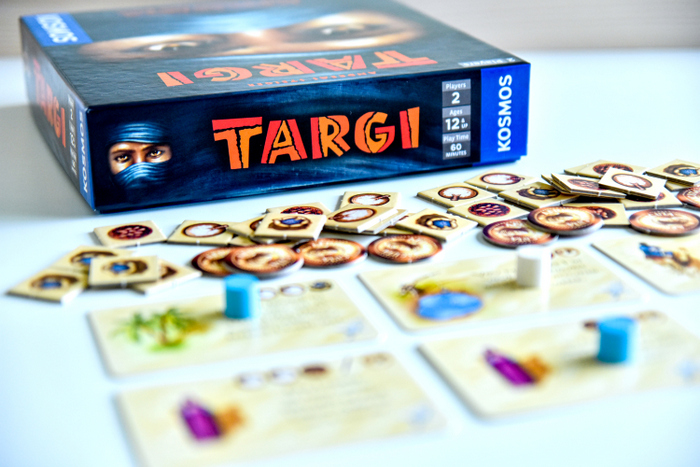
Games with a historical, geographical, or cultural connection are amazing for gameschooling because they get kids excited to learn more about different people and places. Reading the story behind the game always provides such interesting context and opportunities for deeper learning. Targi is a game about The Tuareg, a semi-nomadic group who live in the Sahara desert. Where is the Sahara desert? Grab the atlas and find out!
These fascinating people wear specific clothing to protect themselves from the elements in their native lands and they travel across the desert and trade with other tribes.
In Targi, a 2-player game for players 12+, developing the wealthiest and most successful tribe is the goal. Both players try to do this by trading goods to earn gold and avoiding robbers.
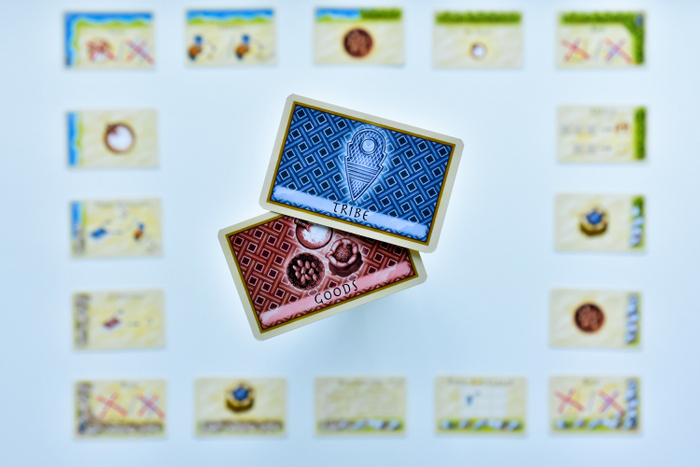
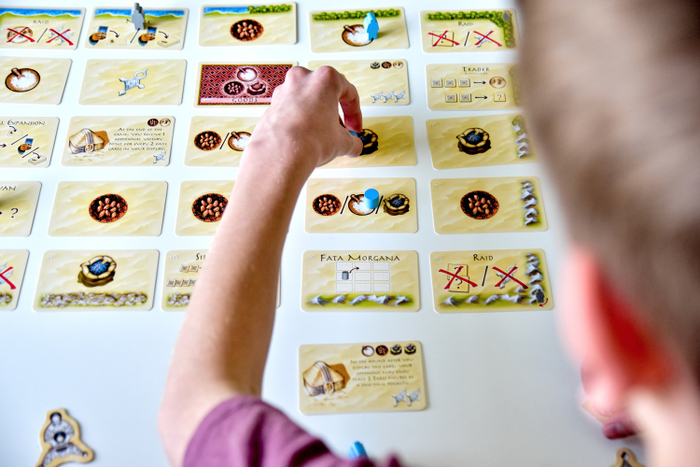
The game’s “board” is set up by creating a grid of 5×5 grid of cards. Border cards make the exterior of the grid and the interior is made by alternating goods and tribe cards. The robber begins the game on Border Card #1, the card in the top left corner of the grid.
Each border card specifies an action or resource that can be gained by placing on that card. Goods card lists 1 or more goods (salt, pepper, or dates).
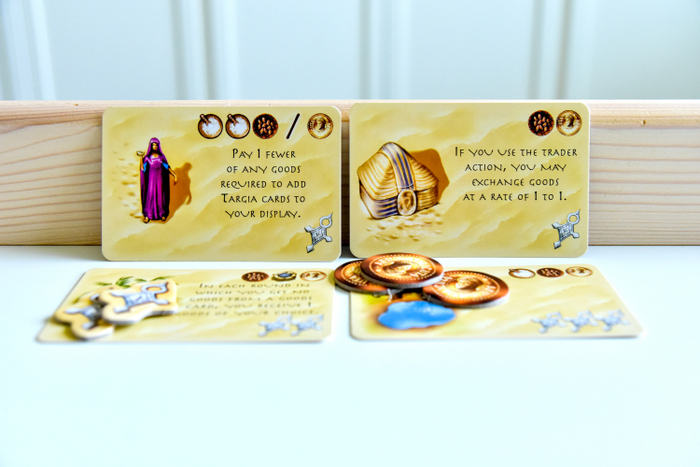
Tribe cards have the cost of the card, the number of victory points it will earn you, advantages of the card, and a symbol (well, camel rider, oasis, Targia, camp).
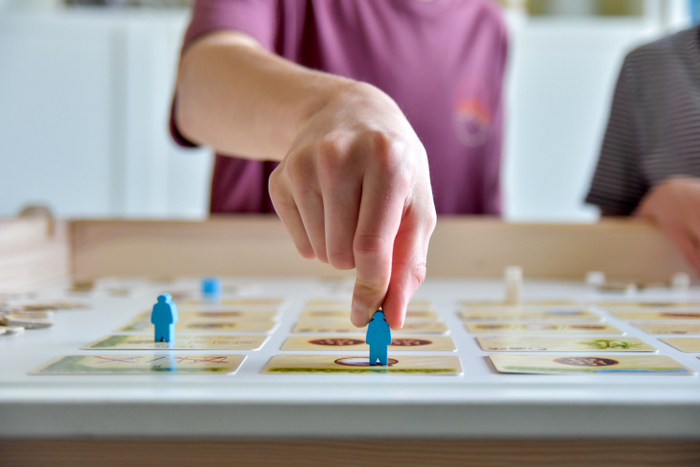
Players take turns placing one Targi figure at a time on a border card. Targi cannot be placed:
- on the card where the robber is standing
- on a raid corner card
- on a card where a Targi is already placed
- on a card opposite of an opposing player’s Targi
When both players have placed both Targi figures, players place both Tribe Marker tokens (if able) in the cards that mark the intersection of two Targi figures.
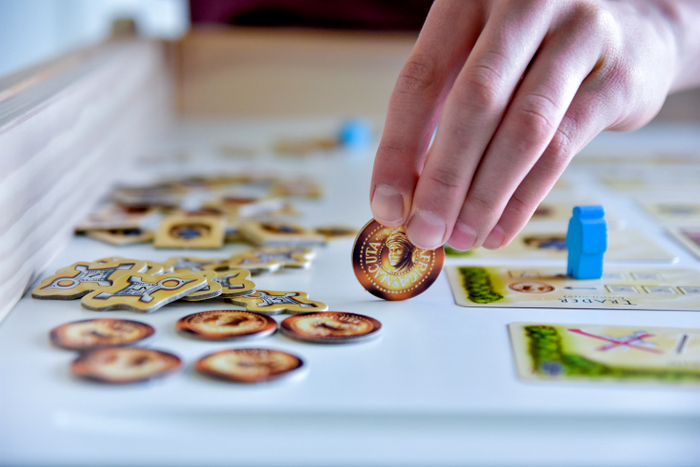
Players then collect resources or use abilities indicated on the cards.
For Targi figures placed on border cards, collect the goods or complete the actions and leave the card as is.
If a player’s Tribe marker is on a Goods card, collect the goods, discard the card, and replace the card with an upside down Tribe card.
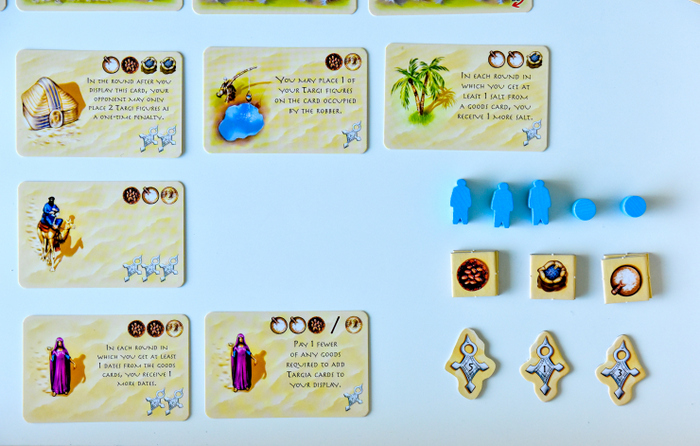
If a player’s Tribe marker is on a Tribe card, the player can pay for the good by paying the resources listed in the top right hand corner to DISPLAY the card. Players can hold 1 tribe card in their hand at a time if they choose not to pay and display immediately.
The goal of the game is create a 3×4 grid of displayed Tribe cards.
- Rows with all the same symbol earn the player 4 victory points at the end of the game.
- Rows with all different symbols earn the player 2 victory points at the end of the game.
- Any other row arrangements yield no bonus victory points.
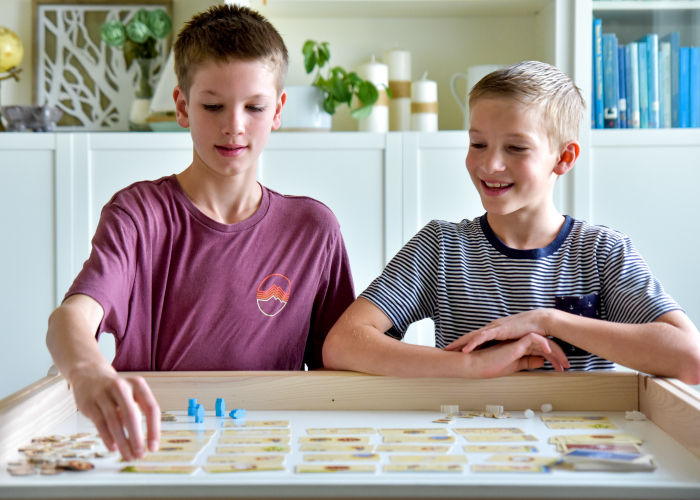
A two-player game is sometimes just right, and Targi is challenging, beautiful, different every time, and lots of fun to play. With all kinds of potential educational connections, Targi makes a superb gameschooling game!
Thanks to Thames & Kosmos for sharing with us!



